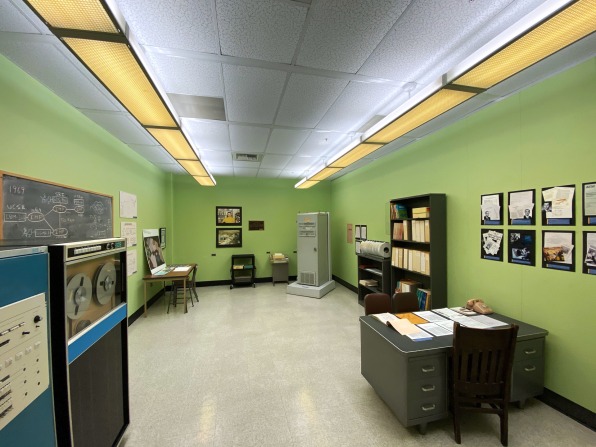
Today exchanging a message via WhatsApp or Skype is a normal gesture, which is part of the activities we carry out in our daily lives. In all history books, it is reported that on the evening of July 20, 1969 at 8:17 p.m., Neil Armstrong, after setting foot on the moon, said the famous phrase:
“that’s one small step for a man, one giant leap for mankind.”
But on the evening of Wednesday, October 29 of the same year, at 10:30 p.m., almost three months later, there was another giant leap forward for all mankind, perhaps even more important than Armstrong’s, which is not mentioned on no history book.
Below is the comic story of this huge event, created for RedHotCyber by @dinaz.it (instagram account), to tell us in a comical way what we are going to tell you with this article.
That evening, the first message was sent to a computer network, and this is exactly what we will talk about in this article.
Los Angeles, UCLA University
California, Los Angeles, UCLA University, October 29, 1969. That evening, UCLA professor Leonard Kleinrock and his student Charley Kline sat at the SDS Sigma 7 computer ready to send a message to Bill Duval who was at an SDS 940 at Stanford University Research, some 350 miles away, via the brand-new Advanced Research Projects Agency-sponsored internetwork, known to all as the Arpanet.
Everything was ready, the computers were working perfectly “OK Stanford, we’re going to send the letter L, let us know when you see it” Leonard said to Stanford. “There it is, we got the L” they said to Stanford. From UCLA there was a round of applause in the background on the receiver. “OK, very very good, just a second, hold on, now we’re going to send the letter O” Charley said from UCLA. “Oh my God, we just got an O, keep it up”
“Get ready, here comes a G, let me know when you get it” But a few seconds passed and stendford said “Did you send it?” “Yes, we just sent the G, do you understand?” they said from UCLA but a few more seconds of silence passed “Damn, 940 just crashed.” they told Stanford “Who cares, we did it, and it’s a success! Get out the champagne!”About an hour later, the scientists tried the test again and were able to transmit the word “Login.”
That evening at 8:30 p.m., the first message was sent between two electronic computers, a huge step forward in the history of technology and electronics. These computers had monstrously lower performance than a simple smartphone today, we’re talking about 128 kb of RAM and 24 MB of disk space.
We are talking about the Jurassic of computer science, that period of great innovations, scientific research, but also of great hackers and computer science pioneers who laid the foundations of the modern internet and everything we know today that surrounds our lives

3420 Boelter Hall at UCLA University
Obviously the first message in a network between computers was the point of arrival of a long journey, carried out in the design and creation of the network that starts from even further away. In fact, it was American President Eisenhower, terrified that America could lose its scientific edge, who gathered around him the best scientists of the time, appointing James Killian (james kelian) as head of Arpa, Advanced Project, Research Agency.
So, in the 1960s, in the midst of the Cold War, military and academics developed together a military network, capable of resisting a large-scale nuclear attack, but also of allocating human and financial resources dedicated to scientific research in the best possible way, thanks also to collaboration at all levels, and therefore between companies, military and academics, even if it was the latter who theorized, designed and developed the network. In 1967, Lawrence Roberts, as head of the program, began to theorize ARPANET, using the packet switching techniques invented by the British computer scientist Donald Davies and the American Paul Baran. Once the design was completed, ARPA issued a Request for Quotation to build the system, which was awarded to Bolt, Beranek and Newman, the famous BBN technology, the company that contributed fundamentally to the birth of the Internet by designing the routing, flow control, software design and network control. Lawrence Roberts managed the implementation of ARPNET and in 1968 asked Leonard Kleinrock to perform mathematical modeling of packet-switched network performance, such as “queuing theory”, a branch of research with applications in many fields that was applied to message switching.

What happened that evening was the end of a journey, but all masterpieces come to life after intense and meticulous preliminary work.
Talking about this today is like talking about a geological era ago, when brontosauruses grazed in the Jurassic prairies, but we are talking about just over 50 years ago, and if we thought back to today’s technology in that era what would come to mind? On that day, probably, in addition to the first message in a computer network, the denial of service was also born without the academic world being aware of it, but that’s another story.
Follow us on Google News to receive daily updates on cybersecurity. Contact us if you would like to report news, insights or content for publication.
